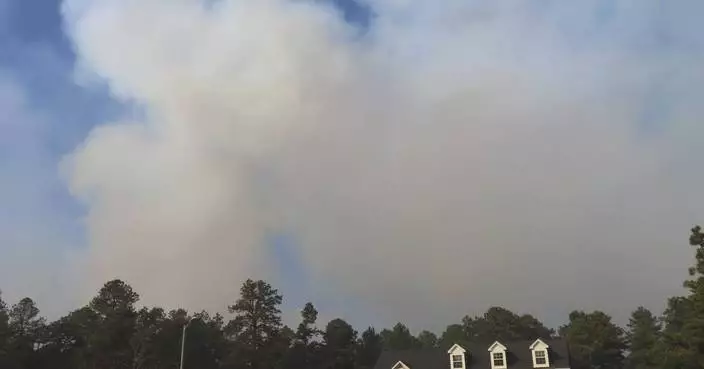Young people of the Yao ethnic group celebrate the opening of a glass walkway in Jiulong River National Forest Park in Rucheng County, Central China's Hunan Province, April 26, 2018.

(Photo: China News Service/Yang Huafeng)
The 555-meter-long transparent walkway, 100 meters above the ground, passes through a waterfall on a mountain and offers visitors a great view of the forest, valley, and river.
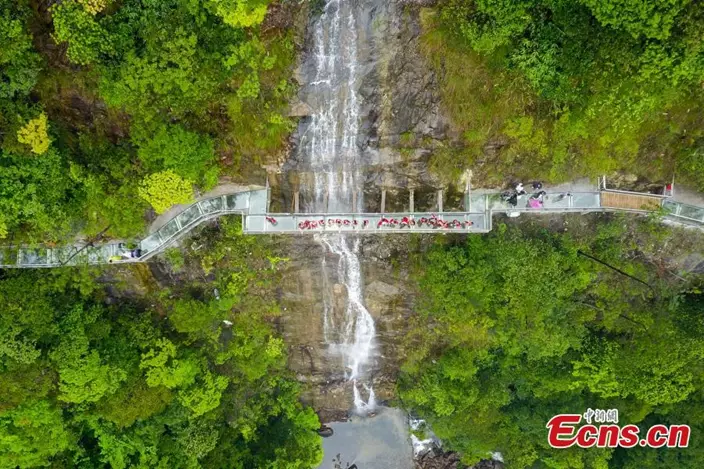
(Photo: China News Service/Yang Huafeng)

(Photo: China News Service/Yang Huafeng)

(Photo: China News Service/Yang Huafeng)
BARCELONA, Spain (AP) — A Spanish research vessel that investigates marine ecosystems has been abruptly diverted from its usual task to take on a new job: Helping in the increasingly desperate search for the missing from Spain’s floods.
The 24 crew members aboard the Ramón Margalef were preparing Friday to use its sensors and submersible robot to map an offshore area of 36 square kilometers — the equivalent of more than 5,000 soccer fields — to see if they can locate vehicles that last week's catastrophic floods swept into the Mediterranean Sea.
The hope is that a map of sunken vehicles could lead to the recovery of bodies. Nearly 100 people have been officially declared missing, and authorities admit that is likely more people are unaccounted for, in addition to more than 200 declared dead.
Pablo Carrera, the marine biologist leading the mission, estimates that in 10 days his team will be able to hand over useful information to police and emergency services. Without a map, he said, it would be practically impossible for police to carry out an effective and systematic recovery operation to reach vehicles that ended up on the seabed.
“It would be like finding a needle in a haystack," Carrera told The Associated Press by phone.
Many cars became death traps when the tsunami-like flooding hit on Oct. 29.
The boat will join a wider effort by police and soldiers who have expanded their searches for bodies and the missing beyond the devastated towns and streets. Searchers have used poles to probe into layers of mud while sniffer dogs tried to find scent traces of bodies buried in canal banks and fields. They are also looking at beaches that line the coast.
The first area the Ramón Margalef is searching is the stretch of sea off the Albufera wetlands, where at least some of the water ended up after ripping through villages and the southern outskirts of Valencia city.
Spanish state broadcaster said Friday that the body of one woman had been found on the beach after she went missing when the rushing water swept through her town of Pedralba, roughly an hour’s drive from the coast.
Carrera, 60, is head of the fleet of the research vessels run by the Spanish Institute of Oceanography, a government-funded science center under the umbrella of the Spanish National Research Council.
He boarded the Ramón Margalef in Alicante, located on Spain's south coast, from where it will set sail to reach Valencia’s waters before dawn Saturday. The plan is to go straight to work with the 10 scientists and technicians and 14 sailors working non-stop in shifts. The boat also helped research the impact from the lava flow that reached the sea from the 2021 La Palma volcano eruption in Spain's Canary Islands.
Finding a body at sea, Carrera said, is highly unlikely. So the focus is on large objects that shouldn't be there.
The boat’s submersible robot loaded with cameras can dive to a depth of 60 meters to attempt to identify cars. Ideally, they will try to locate license plates, although visibility could be extremely limited and the cars could be smashed to bits or engulfed in the muck, Carrera said.
In the longer term, he said his team will also evaluate the impact of the flood runoff on the marine ecosystem.
Those findings will contribute to initiatives by other Spanish research centers to study Spain's deadliest floods of the century.
Spain is used to the occasional deadly flood produced by autumn storms. But the drought that has hit the country for the past two years and record hot temperatures helped magnify these floods, scientists say.
Spain’s meteorological agency said that the 30.4 inches of rain that fell in one hour in the Valencian town of Turis is an all-time national record.
“We have never seen an autumn storm of this intensity,” Carrera said. “We cannot stop climate change, so we have to prepare for its effects.”
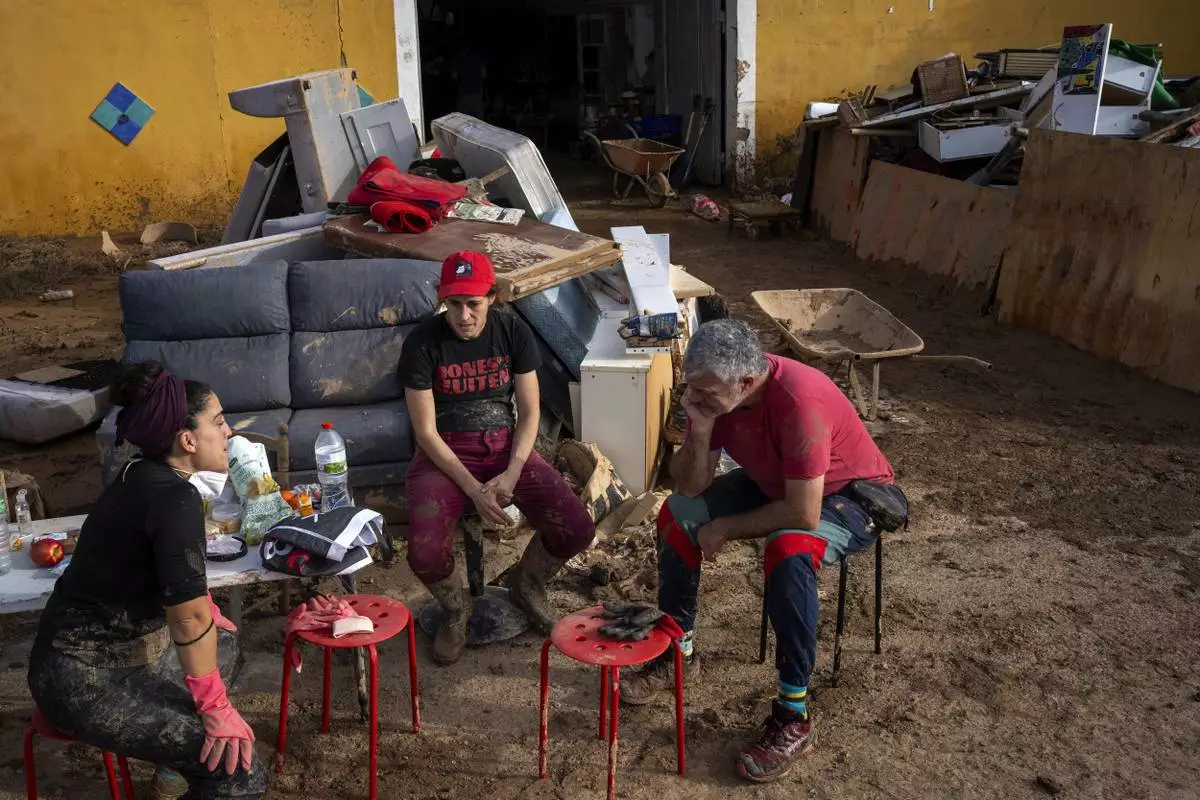
Members of a theatre company sit with their muddy belongings after the floods in the outskirts of Valencia, Spain, Friday, Nov. 8, 2024. (AP Photo/Emilio Morenatti)
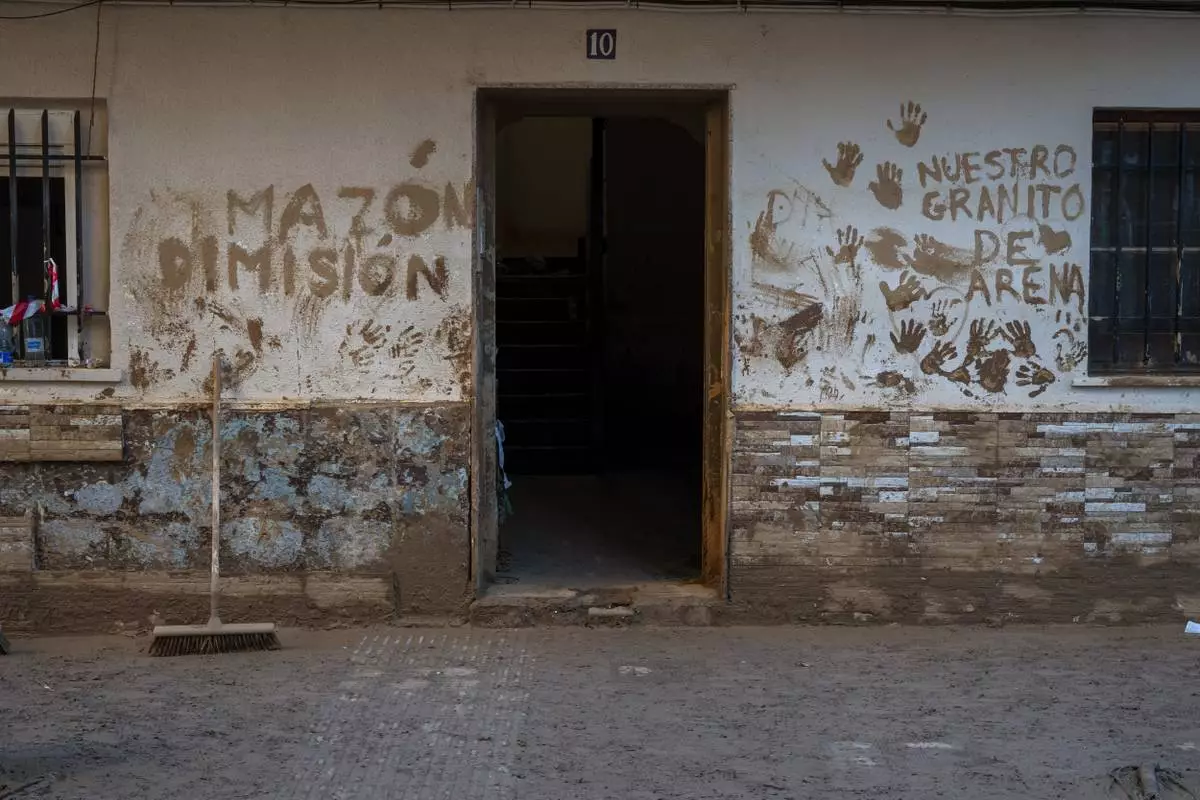
A house affected by flooding is photographed in Massanassa, Valencia, Spain, Friday, Nov. 8, 2024. The graffiti in Spanish means 'Mazon dimisión' in reference to the president of the Valencia community Carlos Mazon. (AP Photo/Emilio Morenatti)
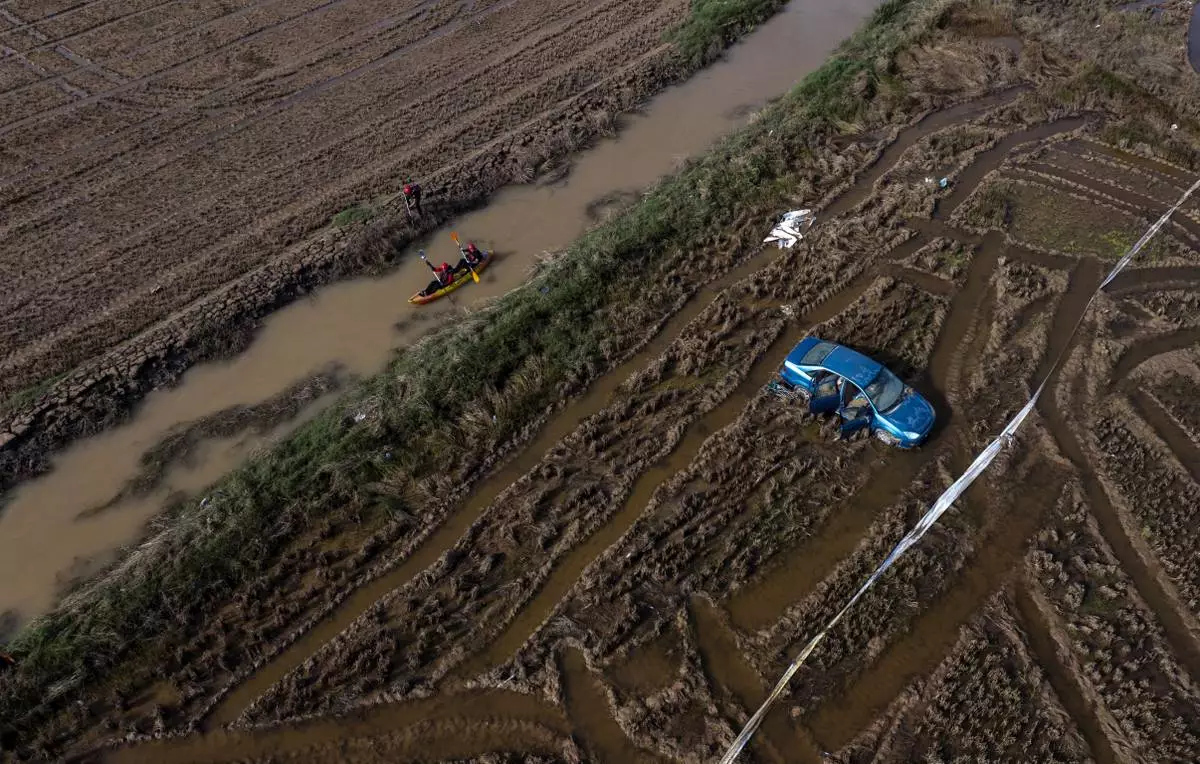
Members of the V battalion of the military emergency unit, UME, use a canoe to search the area for bodies washed away by the floods in the outskirts of Valencia, Spain, Friday, Nov. 8, 2024. (AP Photo/Emilio Morenatti)
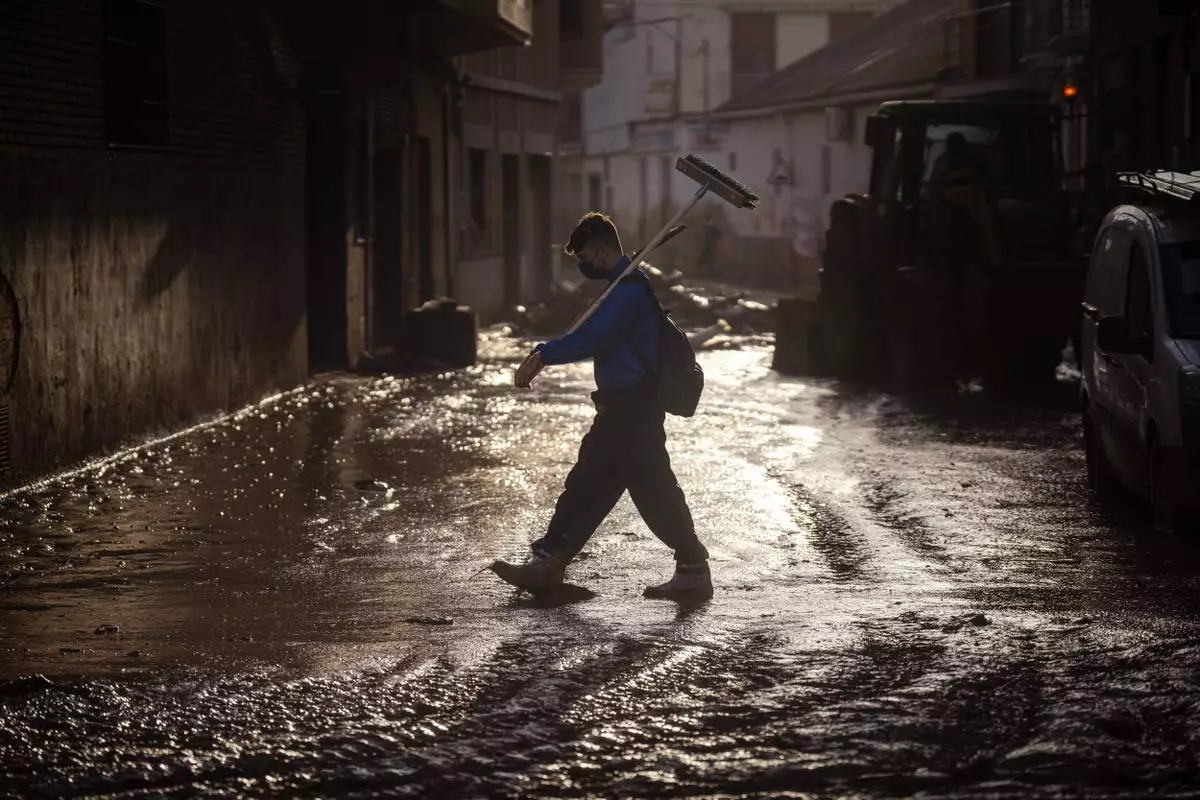
A volunteer walks with a broom over a muddy street in Massanassa, Valencia, Spain, Friday, Nov. 8, 2024. (AP Photo/Emilio Morenatti)
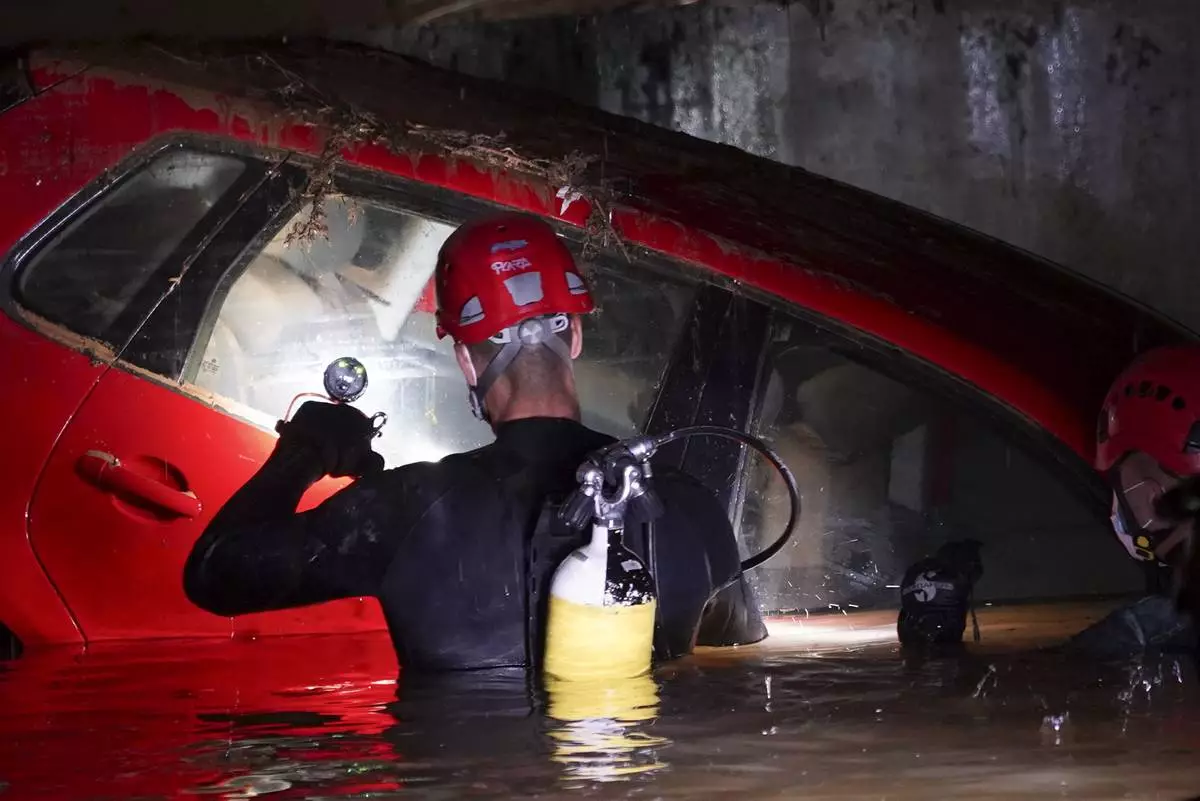
Civil Guards walk in a flooded indoor car park to check cars for bodies after floods in Paiporta, near Valencia, Spain, Monday, Nov. 4, 2024. (AP Photo/Alberto Saiz)
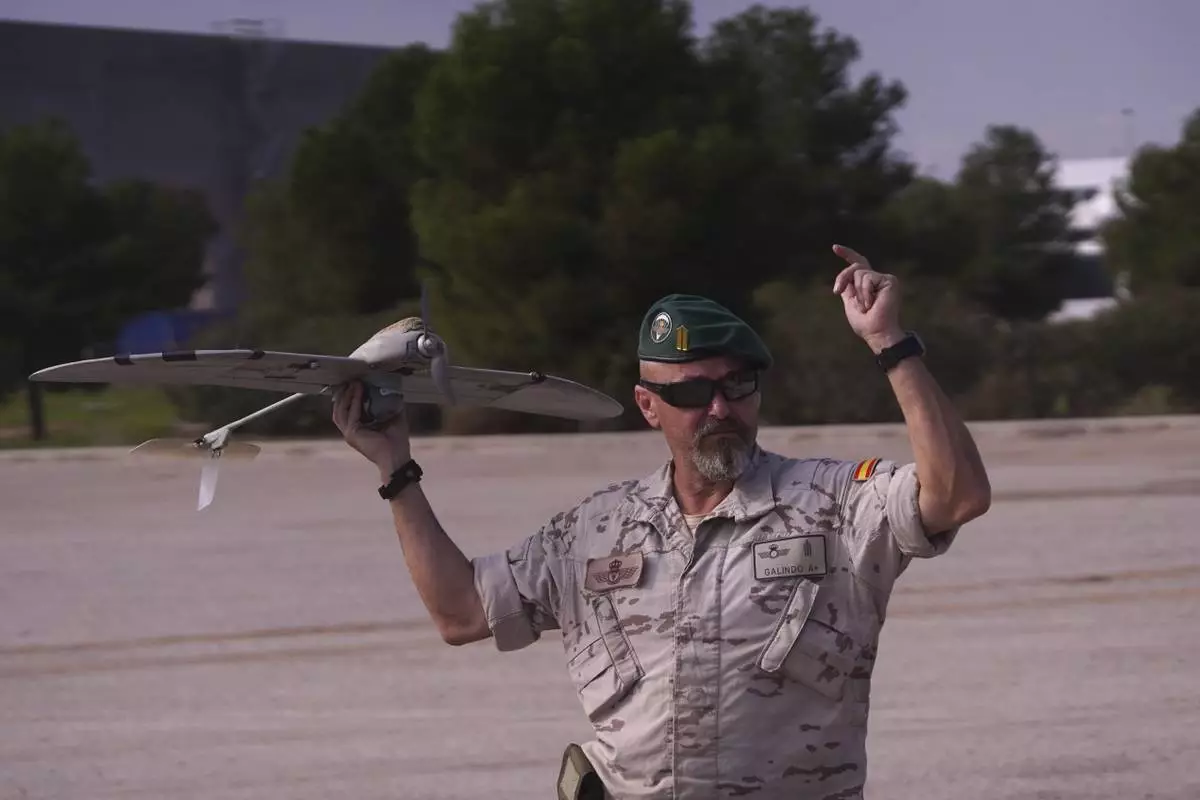
A soldier from the Spanish Parachute Squadron (EZAPAC) launches a drone in the search for bodies after floods in Barranco del Poyo on the outskirts of Valencia, Spain, Tuesday, Nov. 5, 2024. (AP Photo/Alberto Saiz)
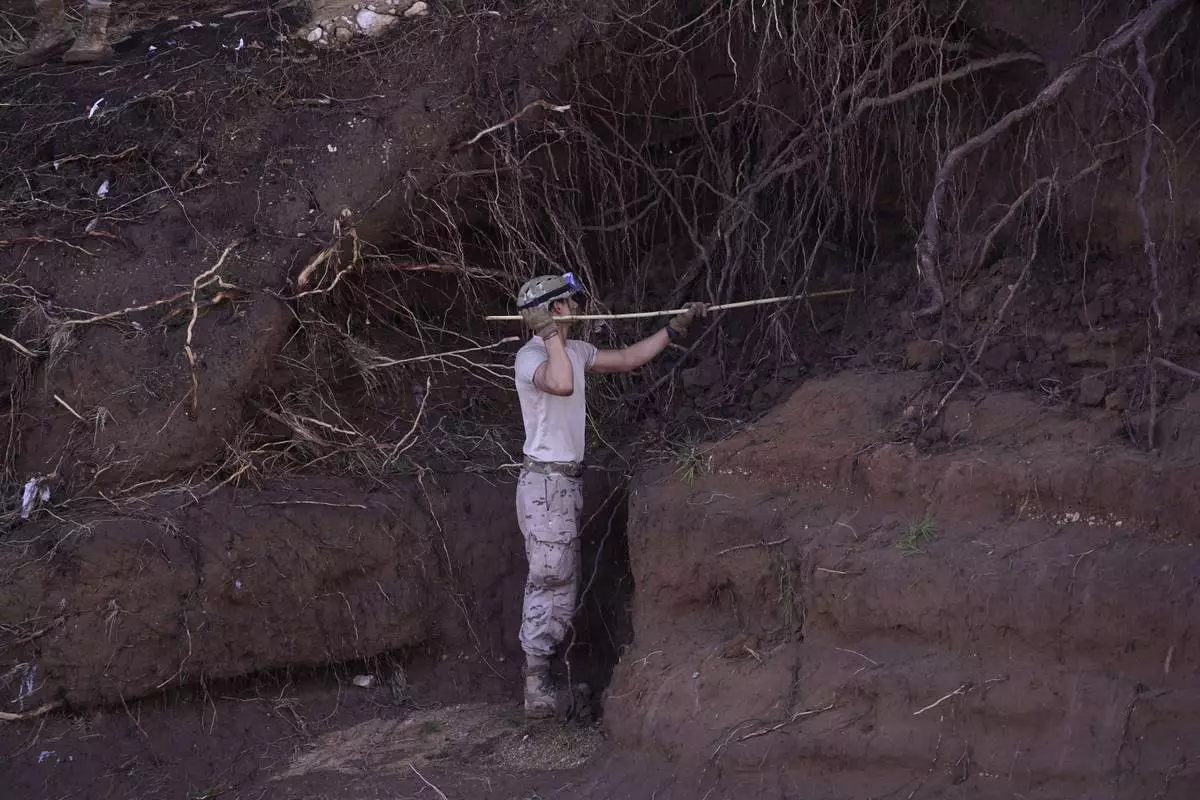
A soldier from the Spanish Parachute Squadron (EZAPAC) searches for bodies after floods in Barranco del Poyo on the outskirts of Valencia, Spain, Tuesday, Nov. 5, 2024. (AP Photo/Alberto Saiz)
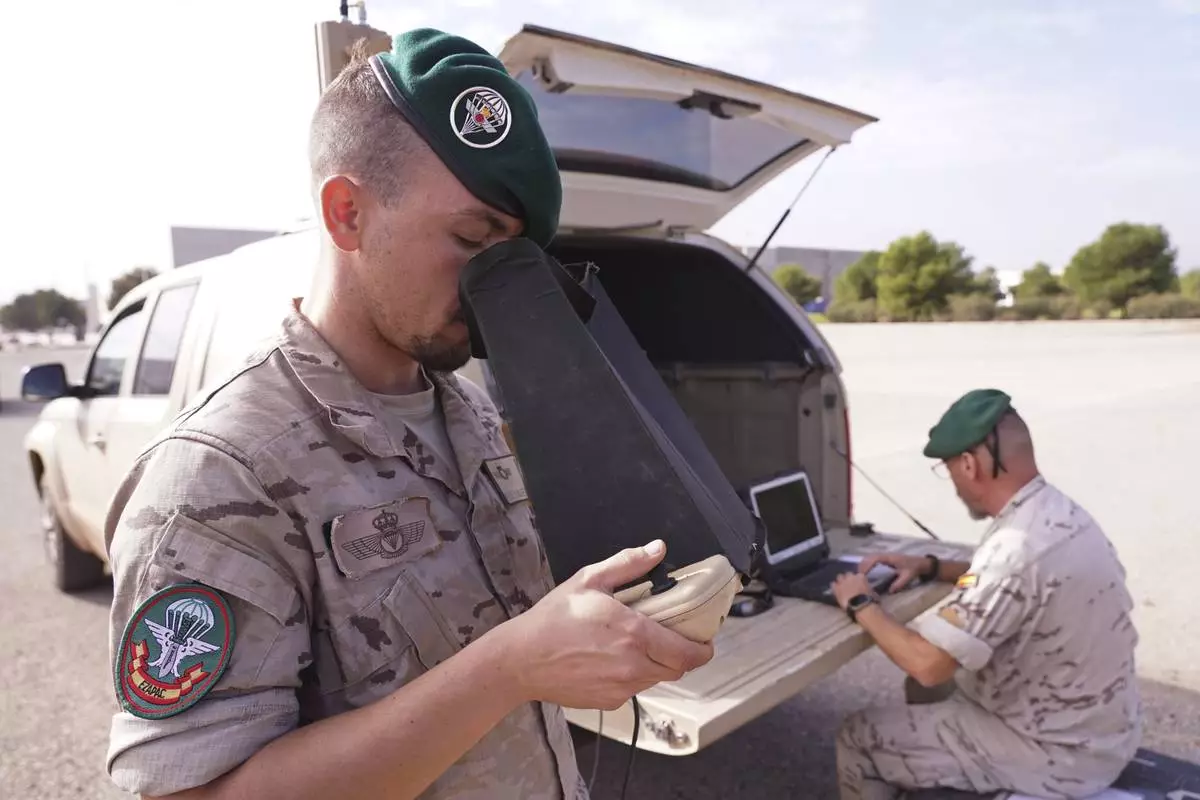
A soldier from the Spanish Parachute Squadron (EZAPAC) operates a drone in the search for bodies after floods in Barranco del Poyo on the outskirts of Valencia, Spain, Tuesday, Nov. 5, 2024. (AP Photo/Alberto Saiz)
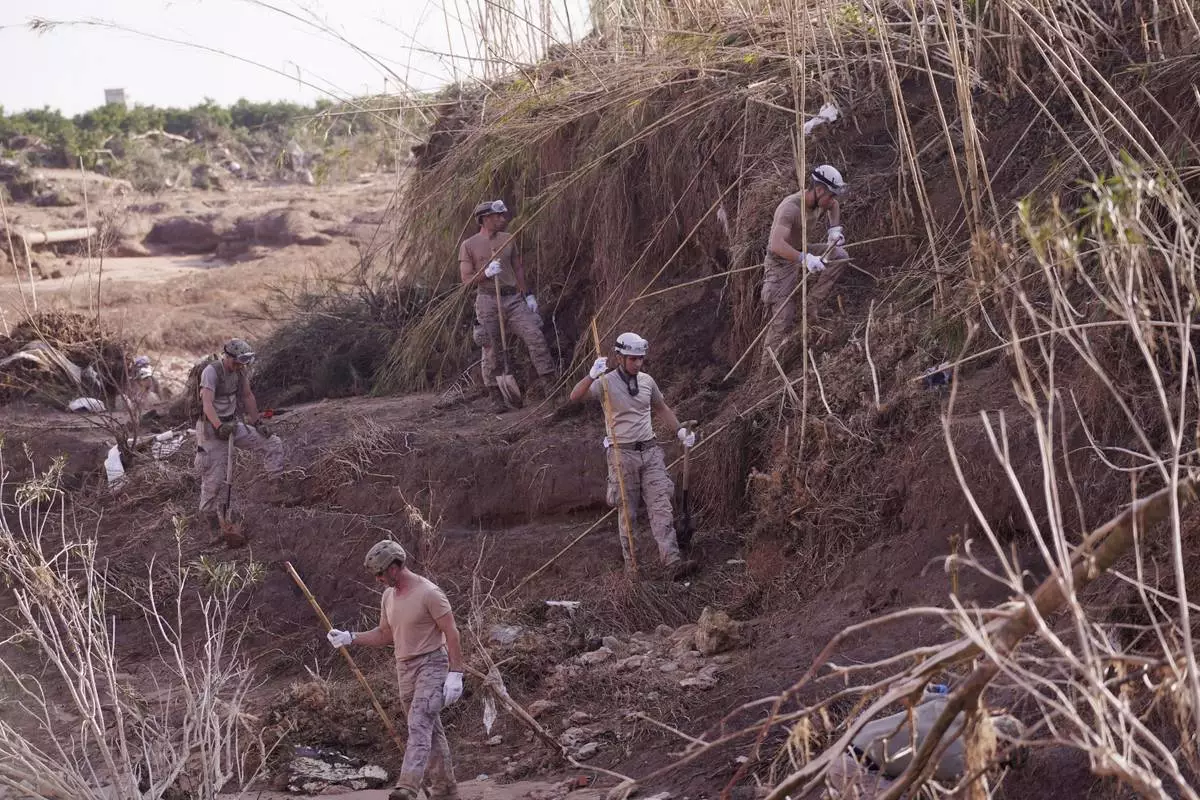
Soldiers from the Spanish Parachute Squadron (EZAPAC) look for bodies after floods in Barranco del Poyo, Spain, Tuesday, Nov. 5, 2024. (AP Photo/Alberto Saiz)

Members of the army, police and volunteers clean the mud after the floods, in Masanasa, Valencia, Spain, Thursday, Nov. 7, 2024. (AP Photo/Emilio Morenatti)
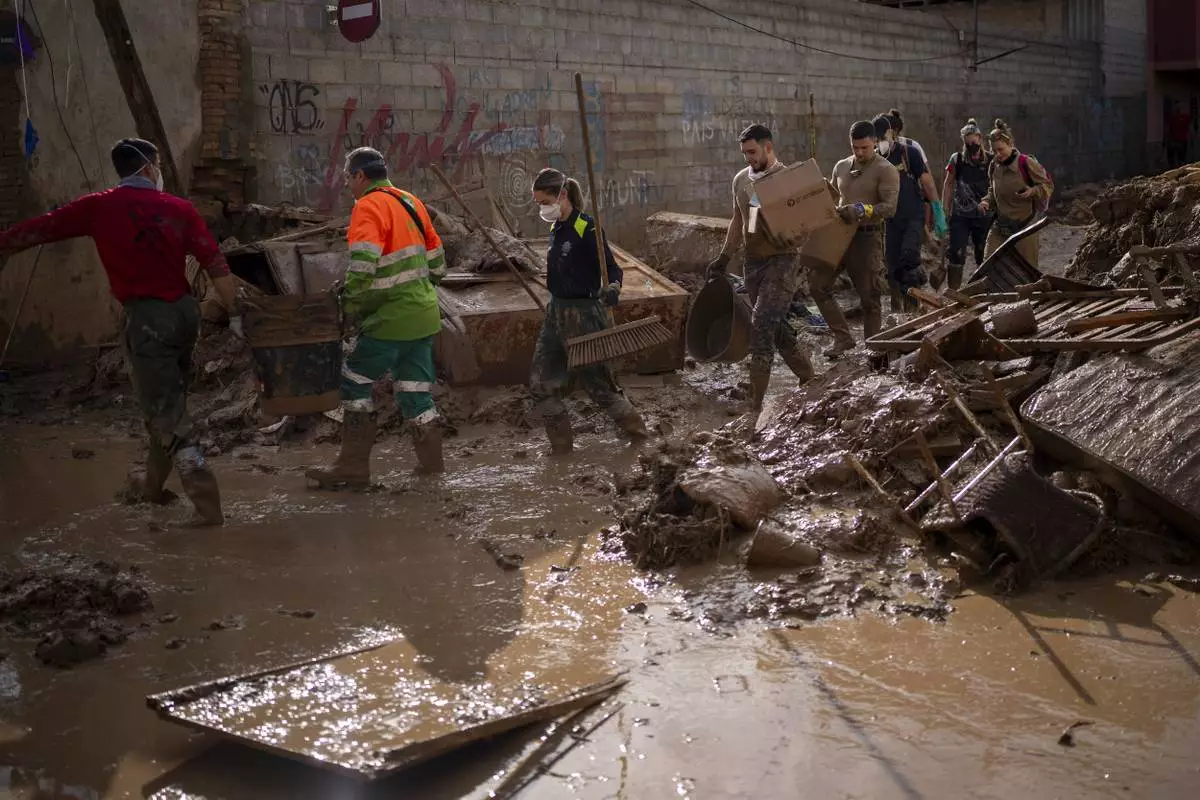
Members of the army and police walk through streets still awash with mud while clearing debris and cleaning up after the floods in Masanasa, Valencia, Spain, Thursday, Nov. 7, 2024. (AP Photo/Emilio Morenatti)

Dolores Merchan, 67, looks down on her mud-splattered belongings from the house where she has lived all her life with her husband and three children, and which has been severely affected by the floods in Masanasa, Valencia, Spain, Thursday, Nov. 7, 2024. (AP Photo/Emilio Morenatti)
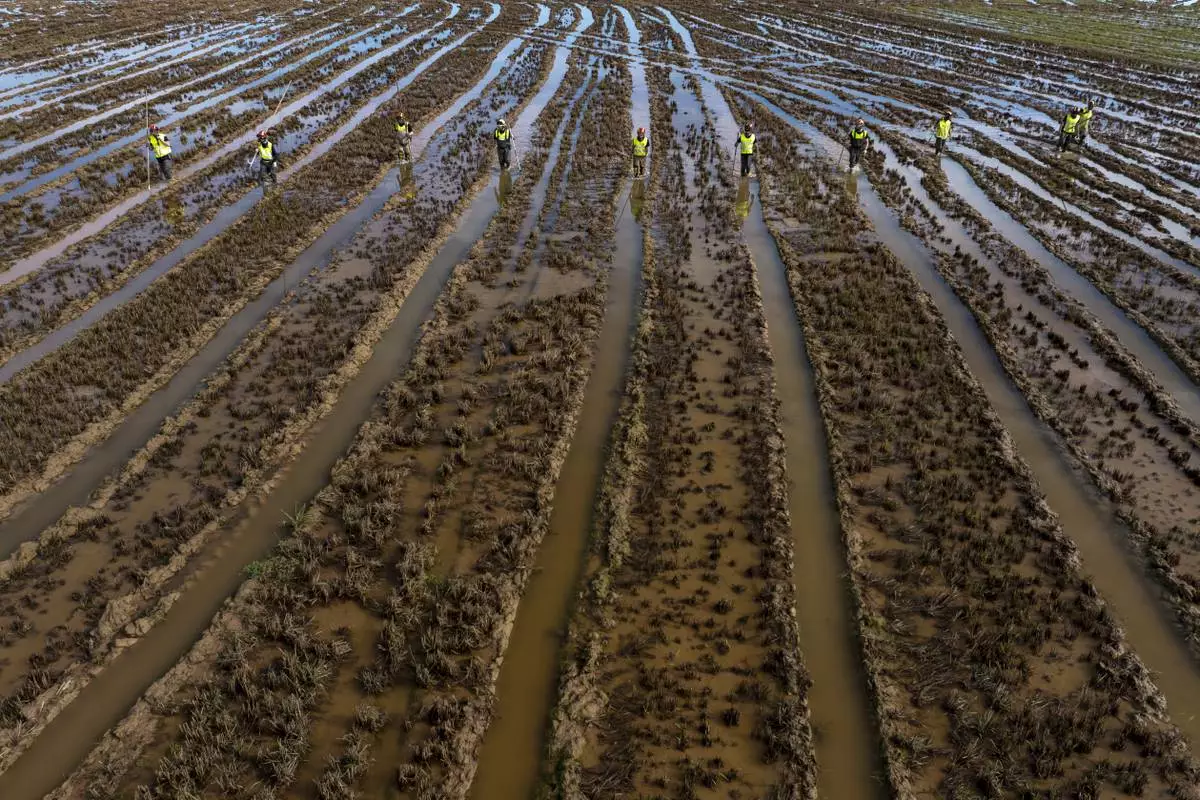
Members of the V battalion of the military emergency unit, UME, search the area for bodies washed away by the floods in the outskirts of Valencia, Spain, Friday, Nov. 8, 2024. (AP Photo/Emilio Morenatti)

Members of the V battalion of the military emergency unit, UME, search the area for bodies washed away by the floods in the outskirts of Valencia, Spain, Friday, Nov. 8, 2024. (AP Photo/Emilio Morenatti)
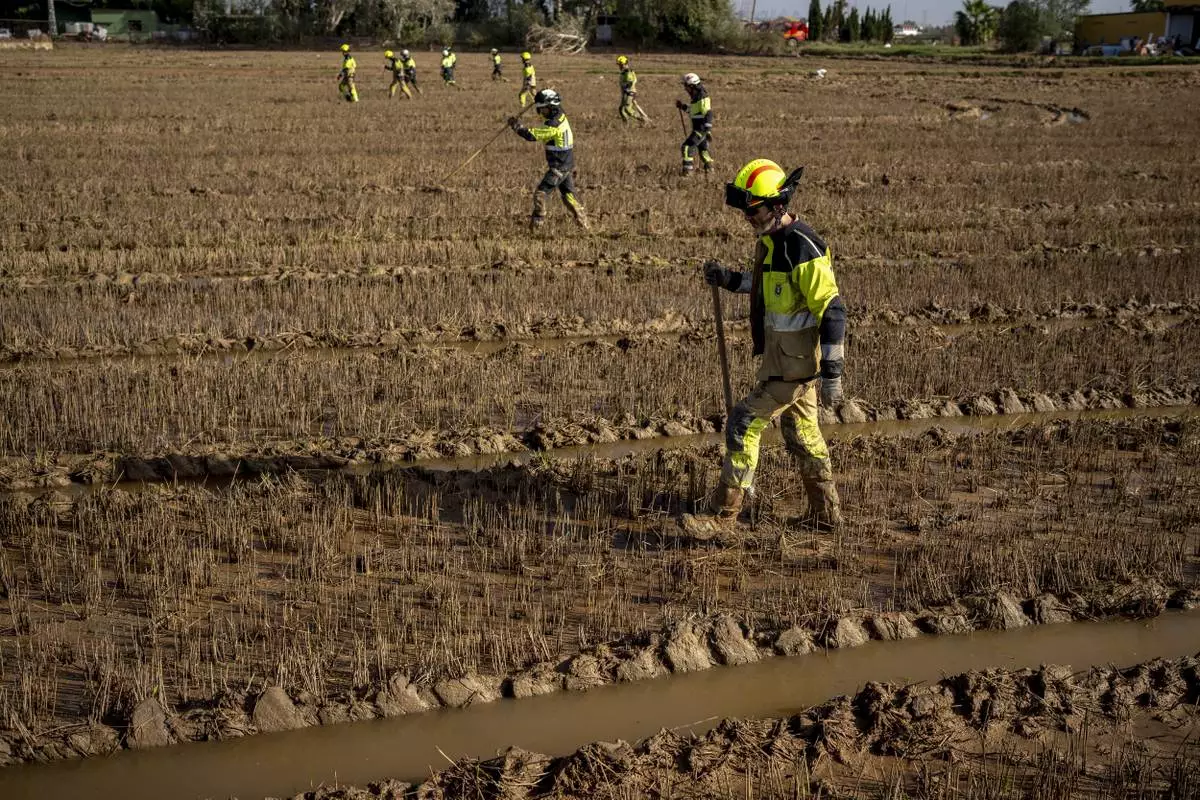
Members of the fire brigade search the area for bodies washed away by the floods in the outskirts of Valencia, Spain, Friday, Nov. 8, 2024. (AP Photo/Emilio Morenatti)
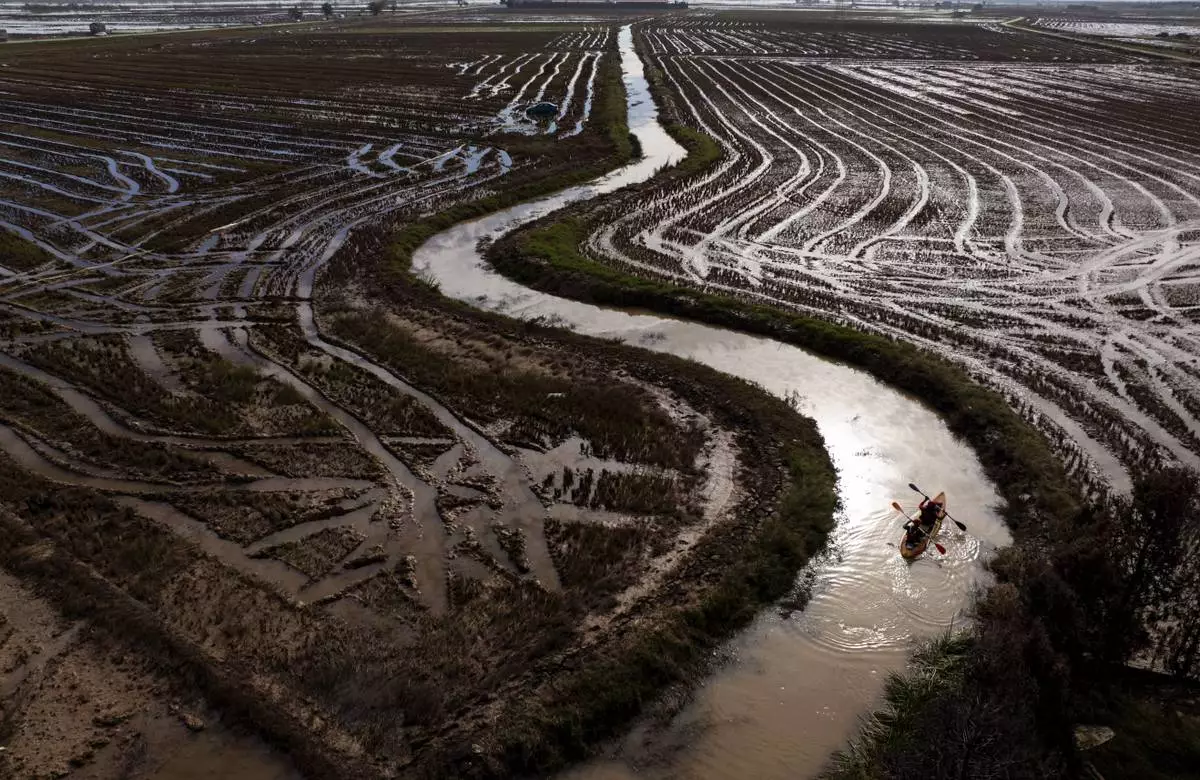
Members of the V battalion of the military emergency unit, UME, use a canoe to search the area for bodies washed away by the floods in the outskirts of Valencia, Spain, Friday, Nov. 8, 2024. (AP Photo/Emilio Morenatti)
























